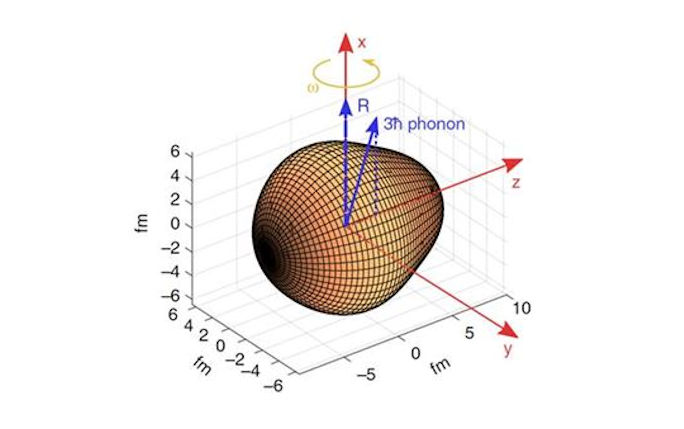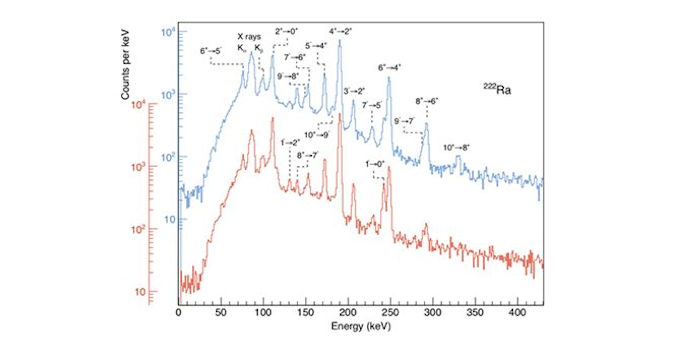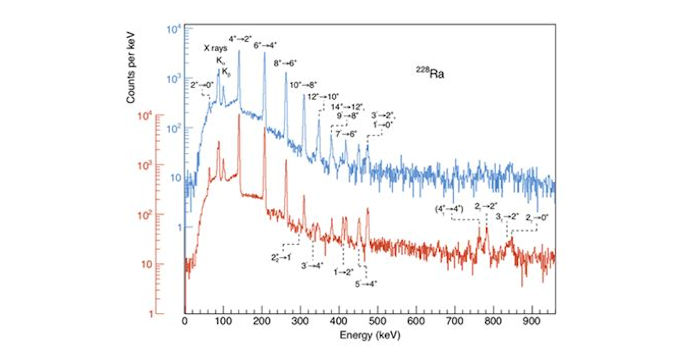Evolution of pear-shaped deformation in radium nuclei

There is sparse direct experimental evidence that atomic nuclei can exhibit stable "pear" shapes (Figure 1) arising from strong octupole correlations. Low-lying Iπ = 3- states are indicative of such reflection asymmetry in the intrinsic nuclear frame. In addition, strong electric octupole (E3) moments of the order of tens of single-particle units suggest that the octupole instability arises from collective effects. What is less clear, however, is whether in some nuclei this distortion is stable, i.e. does the nucleus assumes a permanent pear shape, or is it a dynamic effect where the nucleus undergoes octupole vibrations?
In order to investigate the nature of octupole collectivity in radium isotopes, members of our Nuclear Physics Group measured electric octupole (E3) matrix elements of transitions in 222,228Ra (Z = 88) nuclei using the method of sub-barrier, multi-step Coulomb excitation (Figure 2). Beams of the radioactive radium isotopes were provided by the HIE-ISOLDE facility at CERN. The observed pattern of E3 matrix elements for different nuclear transitions is best explained by describing 222Ra as pear-shaped with stable octupole deformation, while 228Ra behaves like an octupole vibrator. This observation is relevant for the search for permanent electric dipole moments in radium nuclei that would indicate sizeable CP violation requiring a substantial revision of the standard model.
This work has recently been published by Peter Butler et al. in Physical Review Letters: PRL 124, 042503 (2020).

Image: Coulomb-excitation spectra for 222Ra

Image: Coulomb-excitation spectra for 228Ra